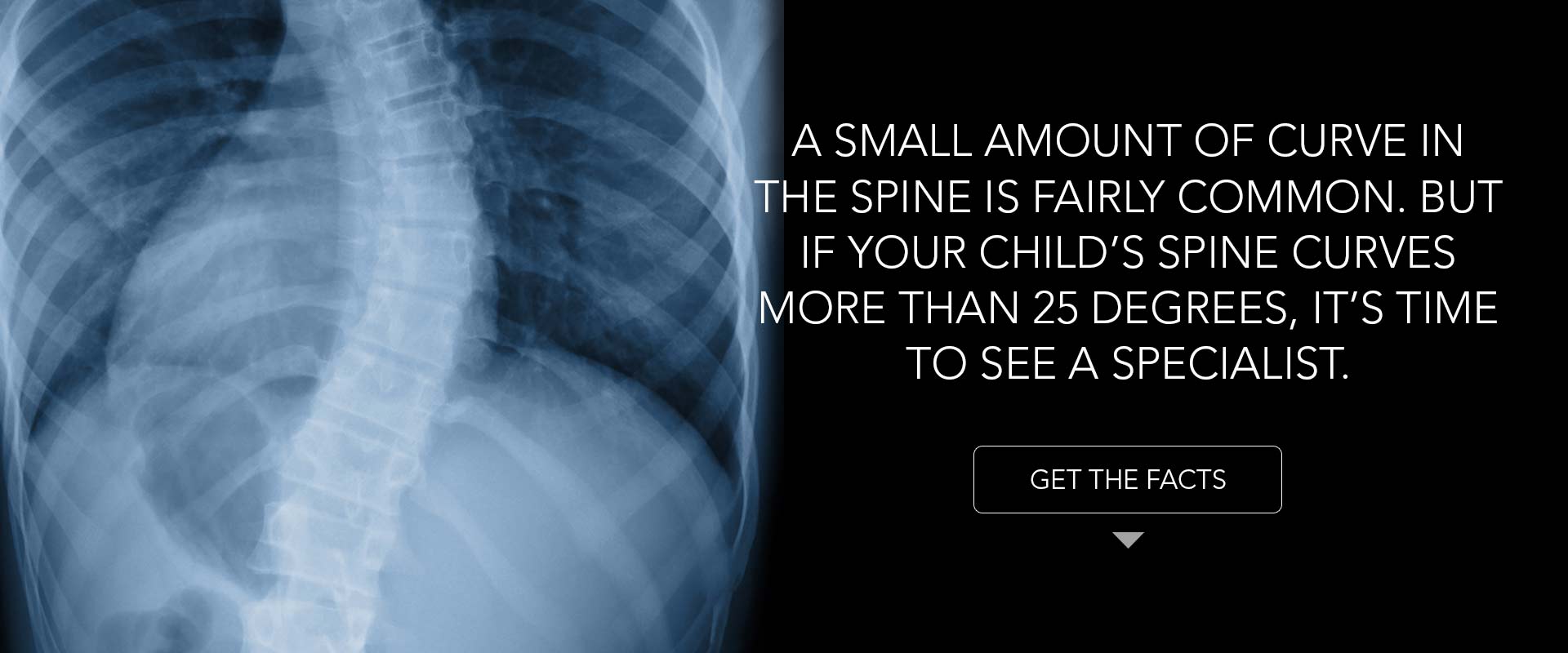Home » Articles » Facts About Scoliosis: Symptoms and Treatments
Facts About Scoliosis: Symptoms and Treatments
- A small amount of curve in the spine is fairly common. If the spine curves more than 10 degrees, it is considered scoliosis.
- Your child’s pediatrician should check for scoliosis at every yearly physical exam.
- If your child’s spine curves more than 25 degrees, or if the curve is getting worse, it’s time to see a pediatric orthopaedic specialist.
- Signs of scoliosis include: a difference in shoulder height, the head isn’t centered with the body, a difference in hip height or position, a difference in shoulder blade height or position, and a difference in the way the arms hang beside the body. When bending forward, the sides of the back may also appear different in height.
- The causes of scoliosis are mostly unknown. It is not caused by anything a person did or didn’t do.
- Certain scoliosis exercises can be done at home to help minimize back pain or to prevent the spine from curving more.
- One treatment of scoliosis is wearing a brace—and braces today are not like they once were. Most of the time, a brace is not noticeable to other people, and while uncomfortable at first, it doesn’t take long to adjust to the feeling of wearing it.
- For severe spinal curves, scoliosis surgery may be an option. Surgery to implant growing rods is used for younger children who are still growing, and spinal fusion is used for teens who are near the end of their growth period.














